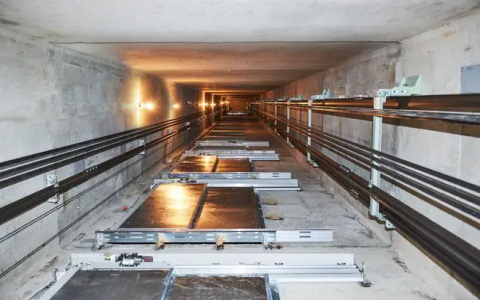Alright, let’s talk about them little box thingies, you know, the ones that go up and down in buildings? Yeah, freight elevators, the small ones. I ain’t no engineer, mind you, but I seen a thing or two in my time, and I can tell ya what’s what when it comes to keepin’ things safe.
First off, you gotta make sure that thing ain’t gonna fall outta the sky, right? So, they got these safety thingamajigs. I heard tell they call ‘em “overload sensors.” That just means if you put too much stuff in it, it won’t go. Smart, ain’t it? Like when you try stuffin’ too many potatoes in a sack, it’ll bust. Same idea.
Then there’s the fire stuff. If there’s a fire, the elevator’s supposed to, you know, do somethin’ special. They call it “fire service mode” or somethin’ fancy. I guess it takes the firemen where they need to go. Good thing too, fires ain’t nothin’ to mess with.
Now, them doors. You don’t want ‘em clobberin’ nobody, do ya? So, they got these “intelligent doors.” Sounds highfalutin, but it just means they’re supposed to open and close without squishin’ ya. Like them fancy automatic doors at the supermarket, only these are on an elevator.
- Overload Sensors: Stops the elevator if it’s too full.
- Fire Service Mode: Helps firefighters in case of a fire.
- Intelligent Doors: Keeps the doors from hitting you.
- Dual Safety Brakes: Two sets of brakes, just in case one fails. Like havin’ a spare tire for your car.
And get this, they got somethin’ called “dual safety brakes.” That means two sets of brakes! One breaks, you got another one. Smart folks thought of that. It’s like wearin’ suspenders and a belt, just to be sure your pants don’t fall down. You can’t be too careful, I always say.
I heard somewhere that them elevator cables are super strong. Like, way stronger than they need to be. They say they could hold way more weight than they’re supposed to. But don’t go tryin’ it! They put them numbers on there for a reason. It ain’t worth riskin’ your neck.
Now, somebody told me there’s this “ASME code.” Sounds like a bunch of rules to me. And that’s a good thing. You want them elevators built right, you know? You don’t want no shoddy work when you’re up in the air in that little box. It’s like buildin’ a fence – gotta make sure them posts are sturdy, or the whole thing will come tumblin’ down.
Safety ain’t no accident, let me tell ya. It takes a lot of thinkin’ and plannin’ to keep folks safe. And when it comes to them little freight elevators, they gotta think about the workers usin’ them all the time. Loadin’ and unloadin’ stuff, goin’ up and down all day long. It ain’t an easy job, and you don’t want to be worryin’ about the elevator on top of everything else.
So, next time you see one of them little freight elevators, remember all the stuff that goes into makin’ it safe. It ain’t just a box on a rope, it’s a whole lot of engineering and hard work to keep things runnin’ smooth and safe. And that’s somethin’ to appreciate, even if you don’t know all the fancy terms.
Them smart fellers at them elevator companies, they keep workin’ on makin’ things better too. Always tinkerin’ and improvin’. That’s good, keeps us all a little bit safer. It’s like how they keep makin’ cars better every year. More safe, more reliable. Same idea with elevators.
So, there you have it. A little bit about them freight elevators and how they keep things safe. Like I said, I ain’t no expert, but I got common sense. And common sense tells you, safety is important. Especially when you’re talkin’ about somethin’ that’s carryin’ you and your stuff up in the air.
Tags: Freight Elevator Safety, Elevator Safety Devices, Small Freight Elevator, Safety Brakes, Overload Sensors, Fire Service Mode, Intelligent Doors, ASME Code















